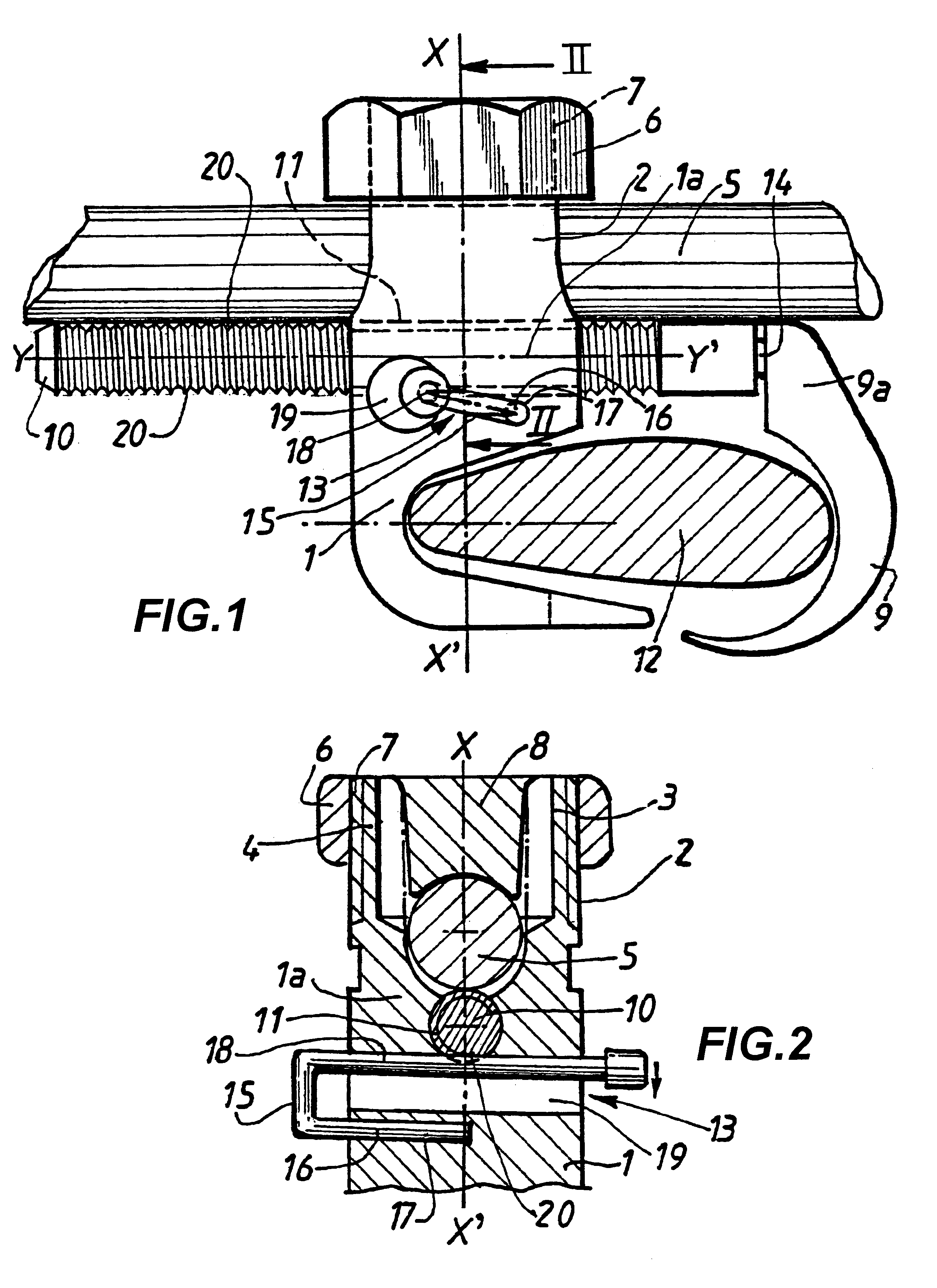Implant for osteosynthesis device with hook
a technology of osteosynthesis device and hook, which is applied in the direction of screws, nuts, bolts, etc., can solve the problems of causing numerous drawbacks, difficult use of pedicular screws, and danger for patients, and achieving the effect of easy application and us
- Summary
- Abstract
- Description
- Claims
- Application Information
AI Technical Summary
Benefits of technology
Problems solved by technology
Method used
Image
Examples
Embodiment Construction
The implant shown in FIGS. 1 and 2 comprises a reference hook 1 and a counterhook 9. The hook 1 is secured to a fixing head 2 which is constituted in conventional manner by two upwardly extending members or lateral branches 3, 4 forming an open U-shaped channel and designed to receive between them a link rod 5, for the purpose of holding it fixed relative thereto by means of a tapped nut 6 suitable for being screwed onto corresponding threaded portions 7 made in the example shown on the outside walls forming portions of cylinders of the lateral branches 3, 4 of the fixing head 2.
In the embodiment shown in FIGS. 1 and 2, the nut 6 has a shoe 8 in its diametral zone, which shoe 8 is mounted so as to rotate freely and is designed to cooperate with the link rod 5 by clamping thereagainst.
The implant has free connection means between the hook 1 and the counterhook 9 enabling them to be moved freely towards each other or away from each other. The counterhook 9 faces towards the hook 1 and...
PUM
 Login to View More
Login to View More Abstract
Description
Claims
Application Information
 Login to View More
Login to View More - R&D
- Intellectual Property
- Life Sciences
- Materials
- Tech Scout
- Unparalleled Data Quality
- Higher Quality Content
- 60% Fewer Hallucinations
Browse by: Latest US Patents, China's latest patents, Technical Efficacy Thesaurus, Application Domain, Technology Topic, Popular Technical Reports.
© 2025 PatSnap. All rights reserved.Legal|Privacy policy|Modern Slavery Act Transparency Statement|Sitemap|About US| Contact US: help@patsnap.com



